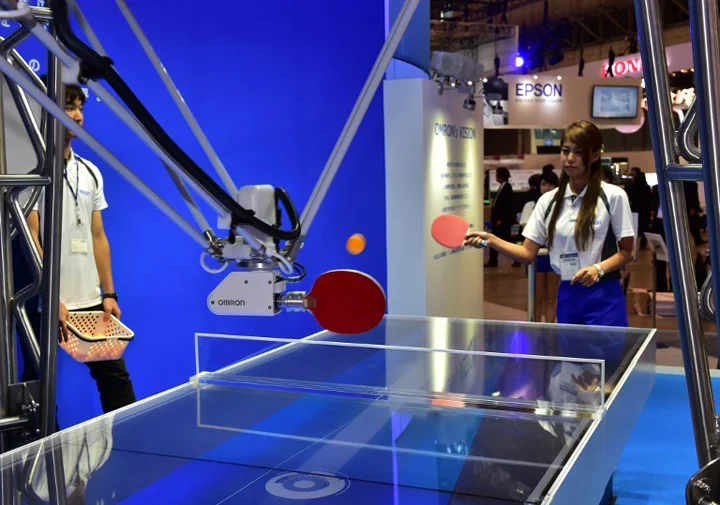by Michelle “Ms. Geek” Klein-Hass
Every year, CEATEC, the Combined Exhibition of Advanced Technologies, parades the most advanced technologies Japan has to offer in a given year before the public. It’s going on as I write this, and of course, robots were front-and-center at Makahari Messe. Robots that double as mobile phones in a very Decepticon-like fashion, robots that will help you become a better ping-pong player, robots that improve your strength so you can pick up heavier objects than you could without augmentation, video drones…of course, the show also features other things, but robotics seems to be in the Japanese DNA, and the labor-saving and entertainment devices were everywhere.
One of the most visited robotics booths may surprise you. Panasonic, along with advanced technology company Seven Dreamers, most famous for working on the Hayabusa asteroid probe; and home builders Daiwa Homes; showed off Laundroid, a device that will fold your laundry for you with precision.
Daiwa Homes’ involvement in the project seems to be installing the robo-folder in its new homes. As was mentioned last week in these pages, people in Japan tend to knock down and rebuild homes on a regular basis, so a home with the latest gadgets is an attractive draw for those looking to rebuild.
But why a robo-folder? Well, there is the pesky problem of Japan’s aging population. Being bent over, folding laundry, is not especially healthy for old backs. The aging population does have one thing in common no matter where you are: aging in place, able to maintain ones independence for as long as possible, is an ideal for everyone getting on in years. If a robot folding your clothes makes the difference between staying home and independent and winding up in a nursing home, then of course, bring it on. Many of the robotic innovations in the past that we now see in everyday life, like robotic vacuum cleaners and robotic floor scrubbers, were initially designed to make everyday household chores easier for a greying population. Concern for the elderly is also driving the development of companion robots like Pepper, and drove the creation of robot pets like the late, lamented Aibo from Sony.
It seems silly to Americans on first blush. We don’t have as much cultural bias to bringing in immigrants to care for our elderly as do the Japanese. It seems like, if the choice is between easing immigration policy in Japan and attempting to invent their way out of the problem through its amazing robotics technology, they are choosing robotics. Sociologists are skeptical that this is going to do more than nibble around the edges at the problem, and say that the Japanese will have to eventually look to loosening immigration policy and bringing in skilled workers from places like China and the Philippines to deal with the problem.
Here’s some video of the Laundroid in action. It’s not as interesting to watch as earlier devices of this kind, including one developed at UC Berkeley in 2010, but it is more versatile. The Laundroid can fold T-shirts, towels, pants, skirts, blouses, collared shirts, and underwear. Socks are currently a challenge for this model, but it’s progress. The Berkeley robo-folder could only fold flat, square or rectangular items like towels.
http://www.youtube.com/watch?v=Gews8sQE9LY
The goal for Panasonic, say representatives who were at CEATEC, is to completely automate the laundry process, from pre-soak to folding. I can only think of the classic anime All Purpose Cultural Catgirl Nuku Nuku TV, and the laundry robot that Mishima Heavy Industries wants to use to take over the world. Good luck with that, guys…
http://www.youtube.com/watch?v=1v-z1oZnTkY





